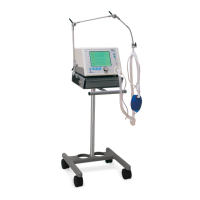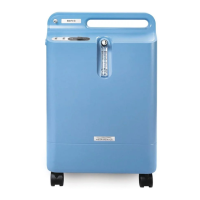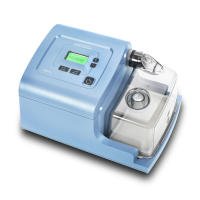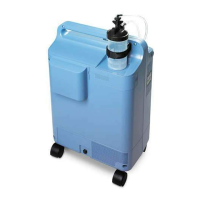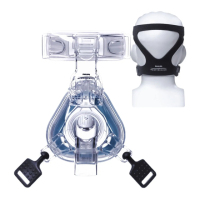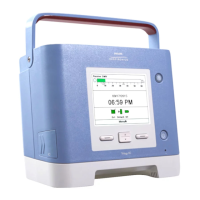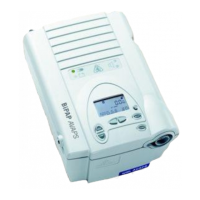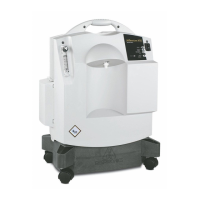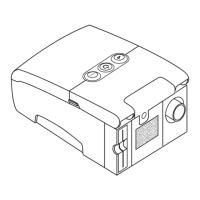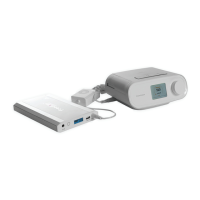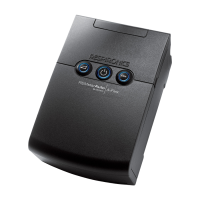Do you have a question about the Respironics V60 and is the answer not in the manual?
Provides general safety warnings and precautions for ventilator use.
Details safety steps and considerations before preparing and setting up the ventilator.
Covers safety aspects during operation, maintenance, and alarm handling.
Covers initial setup procedures and safety checks for new ventilators.
Specifies the medical purpose, indications, and patient types suitable for ventilator use.
Lists conditions where the ventilator should not be used and potential adverse effects.
Details the physical components of the ventilator unit and the backup battery.
Explains how to use the touchscreen interface and navigate settings and data.
Provides steps for powering on, shutting down, and initial verification.
Explains the overall function of the ventilator and its pneumatic system.
Details breath delivery characteristics, including triggering, cycling, and Auto-Trak.
Describes the different ventilation modes available on the V60/V60 Plus Ventilator.
Explains the Average Volume-Assured Pressure Support (AVAPS) mode.
Details the Proportional Pressure Ventilation (PPV) mode and its underlying physics.
Provides instructions for safely connecting the ventilator to oxygen and AC power.
Guides the user through connecting the breathing circuit to the ventilator.
Covers essential pre-use checks, verification, and alarm tests for safety.
Provides critical safety warnings regarding the ventilator's use in MRI environments.
Guides users on changing modes, control settings, and individual parameters.
Explains how to use the Ramp Time and 100% O2 functions for patient comfort and support.
Details how to set up and use the PPV mode, including titration guidelines.
Covers changing alarm settings, silencing, resetting, and managing messages.
Explains how to configure the ventilator for specific patient interfaces for accurate data.
Covers additional user settings, information display, and standby mode operation.
Provides guidance on setting up the patient circuit and cannula for High Flow Therapy.
Describes procedures for switching between ventilation modes and High Flow Therapy.
Lists and explains alarms and messages specific to High Flow Therapy.
Explains display symbols, conventions, and lists monitored patient parameters.
Details how to scale, freeze, and unfreeze waveforms for analysis.
Guides users on how to react to, manage, and troubleshoot ventilator alarms and messages.
Covers setting alarm loudness, silencing, resetting, and hiding/displaying messages.
Provides a guide to resolving ventilator issues based on observed symptoms and alarm tables.
Details approved methods for cleaning and disinfecting the ventilator's exterior and touchscreen.
Outlines the schedule and procedures for routine ventilator maintenance tasks.
Provides instructions for replacing filters, batteries, and general service information.
Covers proper procedures for storing the ventilator and disposing of parts.
Details ranges, resolutions, and accuracies for control settings and ventilation modes.
Lists specifications for patient data monitoring and alarm parameters.
Covers physical dimensions, environmental conditions, and electrical requirements.
Details requirements for accessories and specifications related to alarm timing.
Guides the initial installation, unpacking, inspection, and operational verification of the ventilator.
Details the installation of the backup battery and oxygen/power connectors.
Describes the ventilator's communication ports, protocols, and data display on monitors.
Details the connection and function of the remote alarm and nurse call port.
Lists compatible patient interfaces, ventilation interfaces, HFT interfaces, and breathing circuits.
Lists compatible humidifiers, bacteria filters, and nebulizers with part numbers.
Lists parts for routine maintenance, such as filters.
Details compliance with EMC standards, emissions, and immunity guidelines.
Lists safety classifications and relevant standards for medical electrical equipment.
Guides on entering diagnostic mode and configuring system settings like language and date.
Details accessing the event log and performing touchscreen calibration for service.
Explains the procedure to exit diagnostic mode and return to normal operation.
| Device Type | Ventilator |
|---|---|
| Tidal Volume Range | 50 to 2000 ml |
| FiO2 Range | 21% to 100% |
| PEEP Range | 0 to 25 cmH2O |
| Modes of Ventilation | CPAP |
| Display | Color LCD touchscreen |
| Power Supply | AC 100-240V, 50/60Hz |
| Peak Flow | Up to 180 L/min |
| Alarms | High/Low Pressure, Apnea, Power failure |
| Battery Backup | Internal battery with 6 hours of operation |
